Supreme Soviet
The Supreme Soviet (Russian: Верховный Совет, Verkhóvnyj Sovét, English: literally "Supreme Council") was the common name for the legislative bodies (parliaments) of the Soviet socialist republics (SSR) in the Soviet Union. These soviets were modeled after the Supreme Soviet of the Soviet Union, established in 1938, and were nearly identical.[1] Soviet-approved delegates to the Supreme Soviets were periodically elected in unopposed elections.[2] The first free or semi-free elections were held during the perestroika in late 1980s. The soviets were largely rubber stamp institutions, approving decisions handed to them by the Communist Party of the Soviet Union or of each SSR.[2] The soviets met infrequently (often only twice a year for only several days) and elected the Presidium of the Supreme Soviet, a permanent body, to act on their behalf while the soviet was not in session.[3] Under the 1936 and 1977 Soviet Constitution the Presidium of the Supreme Soviet served as the collective head of state of the Soviet Union.[4] The Supreme Soviets also elected the Council of Ministers, an executive body. After the dissolution of the Soviet Union in late December, 1991, most of these soviets became the legislatures of independent countries.
Supreme Soviets of the Soviet Republics
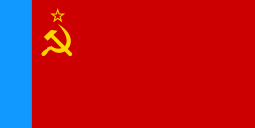 Russian SFSR: Верховный Совет РСФСР
Russian SFSR: Верховный Совет РСФСР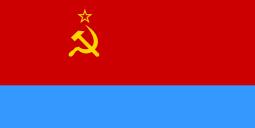 Ukraine: Верховна Рада Української РСР
Ukraine: Верховна Рада Української РСР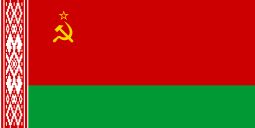 Byelorussia: Вярхоўны Савет Беларускай ССР
Byelorussia: Вярхоўны Савет Беларускай ССР Uzbekistan: Ўзбекистон ССР Олий Совети (O'zbekiston SSR Oliy Soveti)
Uzbekistan: Ўзбекистон ССР Олий Совети (O'zbekiston SSR Oliy Soveti)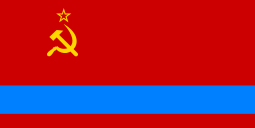 Kazakhstan: Қазақ КСР-нiң Жоғарғы Кеңесi
Kazakhstan: Қазақ КСР-нiң Жоғарғы Кеңесi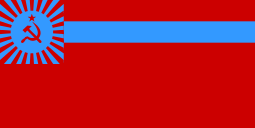 Georgia: საქართველოს სსრ უმაღლესი საბჭო
Georgia: საქართველოს სსრ უმაღლესი საბჭო Azerbaijan: Азәрбаjҹан ССР Али Совети (Azәrbaycan SSR Ali Soveti)
Azerbaijan: Азәрбаjҹан ССР Али Совети (Azәrbaycan SSR Ali Soveti)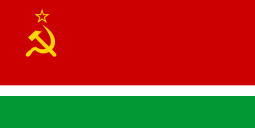 Lithuania: Lietuvos TSR Aukščiausioji Taryba
Lithuania: Lietuvos TSR Aukščiausioji Taryba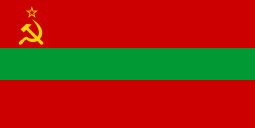 Moldavia: Совиетул Супрем ал РСС Молдовеняскэ (Sovietul Suprem al RSS Moldovenească)
Moldavia: Совиетул Супрем ал РСС Молдовеняскэ (Sovietul Suprem al RSS Moldovenească)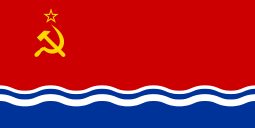 Latvia: Latvijas PSR Augstākā Padome
Latvia: Latvijas PSR Augstākā Padome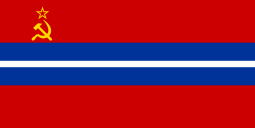 Kirghizia: Кыргыз ССР Жогорку Совети
Kirghizia: Кыргыз ССР Жогорку Совети Tajikistan: Совети Олӣ РСС Тоҷикистон
Tajikistan: Совети Олӣ РСС Тоҷикистон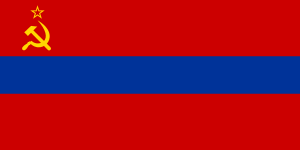 Armenia: Հայկական ՍՍՀ Գերագույն Խորհուրդ
Armenia: Հայկական ՍՍՀ Գերագույն Խորհուրդ Turkmenistan: Түркменистан ССР Ёкары Советы (Turkmenistan SSR Ekary Sowety)
Turkmenistan: Түркменистан ССР Ёкары Советы (Turkmenistan SSR Ekary Sowety) Estonia: Eesti NSV Ülemnõukogu
Estonia: Eesti NSV Ülemnõukogu
Supreme Soviets of the Autonomous Soviet Republics
- Bashkir Autonomous Soviet Socialist Republic: БАССР Юғары Советы
- Tatar Autonomous Soviet Socialist Republic: ТАССР Югары Советы
References
- ↑ Where nation-states come from: institutional change in the age of nationalism by Philip G. Roeder, p. 70
- 1 2 Perestroika-era politics: the new Soviet legislature and Gorbachev's political reforms by Robert T. Huber and Donald R. Kelley, p. 52
- ↑ Russian law: the end of the Soviet system and the role of law by Ferdinand Joseph Maria Feldbrugge, p. 192
- ↑ Ideology, Politics, and Government in the Soviet Union: An Introduction– Google Knihy. Books.google.cz. January 1, 1978. Retrieved 2016-11-26.
